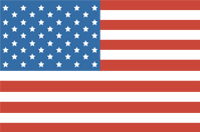It's time to move on. Credit: NEIL HANNA/AFP via Getty Images
Harry Potter is 40. The Boy Who Lived has, in his parallel universe, become the Middle-aged Man Who Kept On Living. That lightning scar is now, perhaps, peeping through an unruly salt-and-pepper fringe; or providing the reproachful point of punctuation below a widow’s peak. The glasses are now bifocals. He’s still skinny-limbed, no doubt, but has he acquired a paunch — the faintest hint of a butterbeer-belly? There’s a poignancy to him: there’s a poignancy to the hero of any story who outlives the central plot arc of his own life. Ask any middle-aged man.
One of the most brilliant of many brilliant things about J. K. Rowling’s books was the way in which they grew up alongside their readers. In the first novel, Harry turned 11, and he grew older with each one; an 11-year-old reader of that first book would have crested young adulthood at the same time Harry did. The stories grew darker, more complex, more challenging. The adventures spilled out from the classroom into the wider adult world. The dangers were greater, the reverses and losses more permanent and more grave.
But then, of course, they stopped and their readers carried on into the trackless wastes of maturity without him. That will have been a loss.
It’s worth taking this opportunity to say what artful books they are, and how thoroughly imagined was their world: Rowling seeded future developments and plot strands so early in the first book; she dropped her trail of breadcrumbs. She knew where she was going, and she went there at just the right pace, and (admirably) she stopped when she got there, her story told. The writing may not have been showy, but it did its work. She picked out evocative details — Ollivander’s moonlike eyes, say, or the light through the high windows striping the stone corridors of Hogwarts. She employed the whole sensorium to make her world immediate. And there was a warm gleam of humour on every page.
When they first came out, some early reviewers — including this one — groused a little that Rowling was a magpie. The novels seemed to be a collage of influences: this from T. H. White or Tolkien, that from Roald Dahl, this from The Worst Witch; that from any number of old-fashioned boarding-school stories; this – blimey — from Kafka. But of course, looking back, to indict her for a lack of originality was to miss the point. Rowling knew just what she was doing. She was in the business of building a myth. And all myths steal and repurpose previous stories: they draw their power from them. The Torah was a straight remix of Babylonian creation myths and all the better for it.
And if a myth does its job, it offers — however fantastical — a way of thinking about the world. Like many children’s books, the Harry Potter books set out to affirm a set of moral principles for the generation that grew up with them; and given the almost 100% saturation of the market it’s fair to assume they will have had an influence. These principles are, we can say, pretty uncontroversial. They affirm the value of courage, honesty, loyalty and the importance of friendship. They say that bullying is to be deplored, kindness valued; that might doesn’t make right and that love is stronger than hate.

 Main Edition
Main Edition US
US FR
FR






